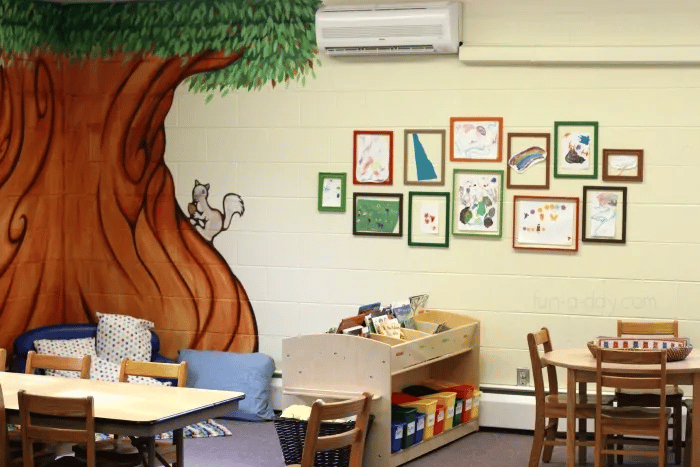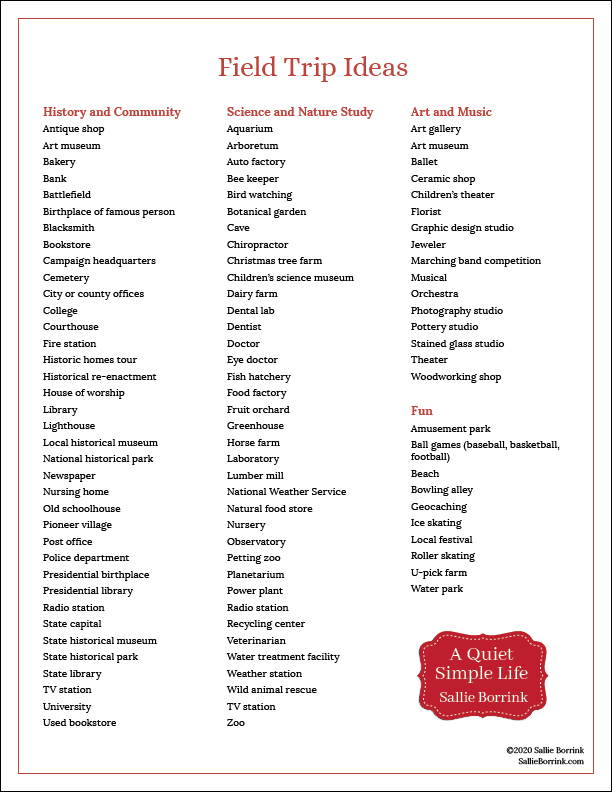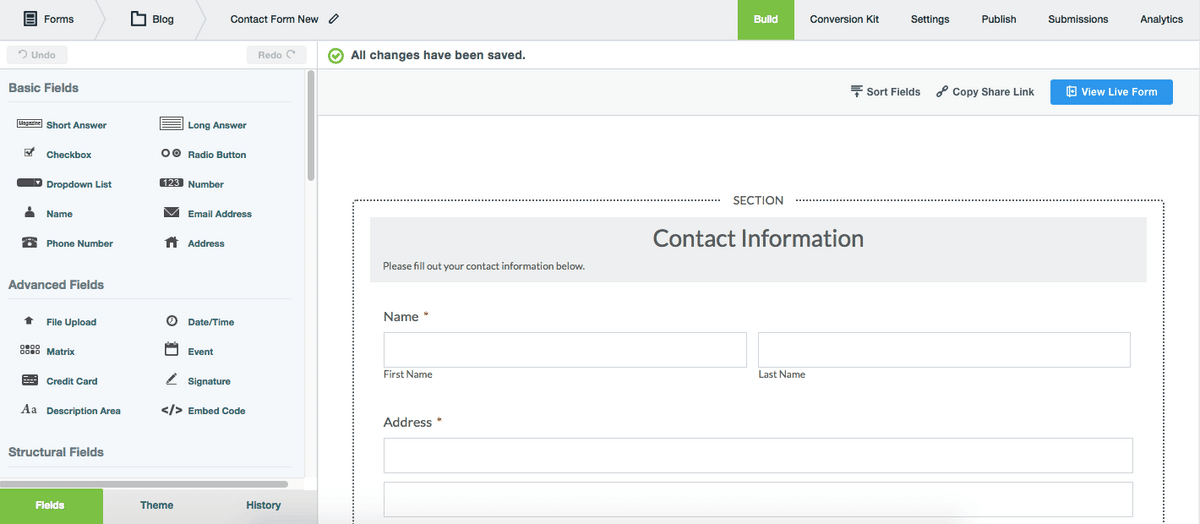When your students are happy, so are their parents. And when parents love your school, they spread the word to their friends and peers in the community.
But adding value to the lives of your students isn’t just for marketing purposes.
When you work in education, it’s satisfying and fulfilling to see your students thrive and soar to fulfill their full potential, while feeling comfortable and safe on your school grounds.
In this article, we’ll walk you through five effective ways you can offer more value to your students, from offering scholarships to organizing after-school activities.
Read on to learn how to make your school the best in the area.
- Keep Your School Well-Maintained
- Offer Scholarships to Talented Students
- Provide Multiple Payment Options
- Organize After-School Activities
- Invite Guest Speakers to Your School
- Conclusion
Keep Your School Well-Maintained
A clean, well-maintained school is the ideal environment for the cultivation of well-organized and imaginative young minds.
Students will be best able to focus on their studies when they’re in a safe space that evokes feelings of belonging and growth.
In fact, according to research from Salford University, a well-designed primary school will often boost a child’s performance in reading, writing, and math.
Additionally, students will feel proud to be attending your school, which can do wonders for their overall confidence and morale.
Keeping your school grounds well maintained is, therefore, an essential method for offering value to your students.
When necessary, repairs should be done quickly, either by your in-house maintenance staff or a trustworthy vendor.

Source: Atlantic Christian School
Letting a problem like a broken ceiling light linger not only distracts students. It also makes it harder for them to complete their tasks.
For example, writing and reading under a broken light can be challenging.
It’s also always a blow to your school’s reputation if a student goes home and tells their parents that the school has no working toilets, mold in the corner of the classroom, or some other maintenance issue.
But functionality isn’t the only thing you should focus on. Try your best to also decorate and paint your school in a way that produces feelings of comfort and joy in your students.
For example, a preschool lobby with paintings of plants and animals on the walls is much more likely to welcome incoming students than plain white walls.
The wall below will definitely entertain students and make them enjoy being in the classroom:

Source: Fun-a-Day
You could also hang the children’s own drawings and paintings on the wall.
This way, students get to help in decorating the classroom, and therefore experience a sense of ownership over the environment.
Keeping your school well-maintained can also help you attract new students.
When prospective students come on tours, they and their parents will be impressed with the interior design, and take it as a reflection of your school’s overall quality.
If you walked into a bank and everything looked like it was falling apart, you probably wouldn’t leave your money with them.
Parents feel the same way about schools. They aren’t going to leave their children somewhere that strikes them as dirty and unsafe.
Further, a well-painted exterior and manicured grounds can also attract the eyes of parents as they drive or walk by, making them curious about what it would be like to send their kids to such a wonderful place.
Lastly, make sure your school takes precautions for emergencies. For example, it should have backup generators that keep school in session even if the power goes out in town.
And you should keep fans in close reach in case the air conditioning decides to take a holiday.
In sum, do what you can to ensure your school is always in good shape.
This will make the students more excited about coming to school and the parents proud to send their kids there.
Offer Scholarships to Talented Students
Provide more value to students by offering scholarships and customized enrollment packages to the most talented ones.
These scholarships can be awarded based on different criteria, from grades and test scores to extracurriculars and sports.
For example, here’s an example rubric for scholarship eligibility:

Source: SYTA Youth Foundation
Of course, you should create your own rubric for eligibility, basing it on what type of students you want to attract to your school.
Offering scholarships doesn’t just make it easier for some good-fit students to pay for attendance.
The practice also improves your school’s reputation by securing the enrollment of talented young people who can accomplish great things.
Plus, when you reduce the financial burden on students, they can focus on their studies and clubs and therefore achieve incredible results that might even earn your school some attention from the media.
And that positive publicity can lead to even more parents wanting to send their kids to your school.
Not to mention, shining students can serve as role models and positive influences to your other students.
A scholarship student’s study habits might just rub off on one of their new friends.
When setting up a scholarship program, start by evaluating your budget to figure out how much you can reasonably offer students who meet the eligibility requirements.
In sum, running a scholarship program is a great way to widen your school’s reach and find some seriously impressive young people to improve your school’s average test scores, news exposure, and more.
Provide Multiple Payment Options
Schools should try their best to remove financial concerns and hurdles from parents, as this will enable more students to go to their school and benefit from the education they provide.
You’ll lose fewer students due to payment issues, and you’ll attract a greater number of students who are a good fit but might’ve been unable to pay otherwise.
This doesn’t mean you have to reduce the price. One of the most effective and simple ways to help more families pay for your school is to provide them with multiple payment options.
Offering multiple payment options means that you should allow parents to pay using different payment methods, from credit cards to cash.
Here are some payment methods you should consider offering:
| ACH payments |
| Physical checks |
| Cash |
| Credit and debit card payments |
| E-wallet payments |
It also means you should allow a variety of payment plans. For example, you might give families the option to pay in multiple, smaller installments instead of paying it all upfront.
This flexibility will be appreciated and reduce the chances parents have to leave your school because of a household cash flow issue.
Here are some other ways to provide families with payment flexibility in how they pay:
| Bulk discounts | Allow parents with multiple children attending your school to receive a discount. This incentivizes parents to send the younger siblings of your students to your school. |
| Upfront discounts | Give parents a discount if they pay a certain amount of the tuition upfront. This helps you secure cash flow and saves them some money. |
| Personal payment plans | Create personalized individual payment plans for families so they can pay how they prefer. |
Personal payment plans are easy to set up when you use an online payments software like Regpack.
You can create a billing schedule for a family, and they can pay each bill and track their progress on their user portal:

Source: Regpack
Not only does this software make things financially easier on the parents, but it also helps you collect payments more efficiently, thanks to the automated billing feature.
In sum, finances are one of the biggest hesitations about sending a kid to the desired school. Parents worry the payment process might be prohibitive.
Therefore, it’s important that you give them multiple ways to pay so they can pick a method that works for them.
Organize After-School Activities
After-school activities give students the opportunity to hang out with their friends, pursue their interests, and learn new things.
At the same time, they provide parents with a bit of extra time to handle their own responsibilities before their kids return home.
Schools can keep students engaged by offering various after-school clubs for them to join, like a baseball club, drama club, chess club, math club, debate club, and any others that would draw a good number of students.
Here are 36 great after-school clubs to consider offering at your school:

Source: The University Network
When students pursue after-school activities they’re passionate about, they’re also building up their college applications, which is something they and their parents care a lot about.
Plus, they’re spending time learning valuable skills, be it strategy from chess, teamwork from sports, or interpersonal skills from the debate team.
Furthermore, schools can take after-school programs a step further and organize field trips to enrich their students’ education.
Even something as simple as going to the local cinema to see a movie related to a history lesson is enough to provide children with a fun, enriching, and memorable experience.
You could also take them to museums, plays, or even tours around local businesses and establishments. The fire station is always a favorite among children.
Here are some great field trip ideas you could arrange for your students:

Source: Sallie Borrink
Just be sure to bring enough chaperones to make sure the kids have a good time without causing any havoc or getting lost.
If you need a tool that will help you easily register students for after-school programs, check out Regpacks, an online registration software.
With features like personalized payment plans and online registration forms, the software makes it easy for parents to sign their kids up, and easy for you to track and manage after-school programs.
The registration forms are super easy to create and customize to your needs:

Source: Regpack
With the software, you can also manage payments thanks to its automated billing. This ensures you’re paid on time without much work on your part.
To sum things up, after-school programs are a great way to improve the standard of life for your students.
They’ll make friendships and discover things about themselves that will last a lifetime.
Invite Guest Speakers to Your School
Inviting guest speakers to your school provides children with the opportunity to learn something new about life from an engaging and authoritative speaker.
Guest speakers can be motivational and educational, and they can come from various professions.
They can share their stories and lessons learned from life, and help students discover more about a certain industry or line of work.
For example, here’s a guest speaker giving a presentation about animal testing in scientific research:

Source: Marlborough
The speaker can be from virtually any profession. What matters is that you’re opening your students’ eyes to possible ways in which they can use their education once they graduate.
Some schools will bring in celebrity speakers as well, which will really excite the students and encourage them to pay attention.
Often, musicians, athletes, artists, and other people with professions that kids deem “cool” are the perfect speakers to persuade children against bad life choices, from driving under the influence to giving up on their dreams.
Usually, middle or high school administrators will schedule the speeches early in the afternoon, perhaps before lunch, in the auditorium.
And they’ll make the time for it by shortening each period by about 10 minutes.
The timing ensures that students are still awake and receptive during the speech. And the shorter class sessions give the students a nice change to their routine.
The speaker aside, sometimes just 12 minutes off of math class is enough to make the day feel special.
Give the speaker at least 30 minutes to do their thing, and schedule some time for questions after.
Interested students should have the opportunity to engage with the speaker and learn more about the topics discussed.
Also, do some work beforehand to ensure the speech accomplishes your goals. Talk with the guest speaker and ask them about the content of their speech.
Also, set your expectations and tell them the structure of the event. Make sure you’re both aligned.
As a final note, the speaker doesn’t always have to come physically to your school. Consider inviting virtual guest speakers with a tool like Zoom.
That way, you aren’t limited to speakers who live near you.

Source: CTE
Whether it’s in-person or virtual, listening to a well-delivered speech from an engaging individual is a splendid way to spice up the school day and give students a healthy dose of inspiration and hard-won life lessons.
Conclusion
Caring for your students and their education is an honorable and important undertaking. There are many things you can do to offer them more value.
You can focus on improving the school’s appearance, making it easier for parents to pay, inviting inspirational guest speakers, or a combination of all three.
If you take consistent strides towards improving their experience at school, you’ll be rewarded with higher attendance, better academic performance, and a stronger stream of revenue and gratitude from your community.



















